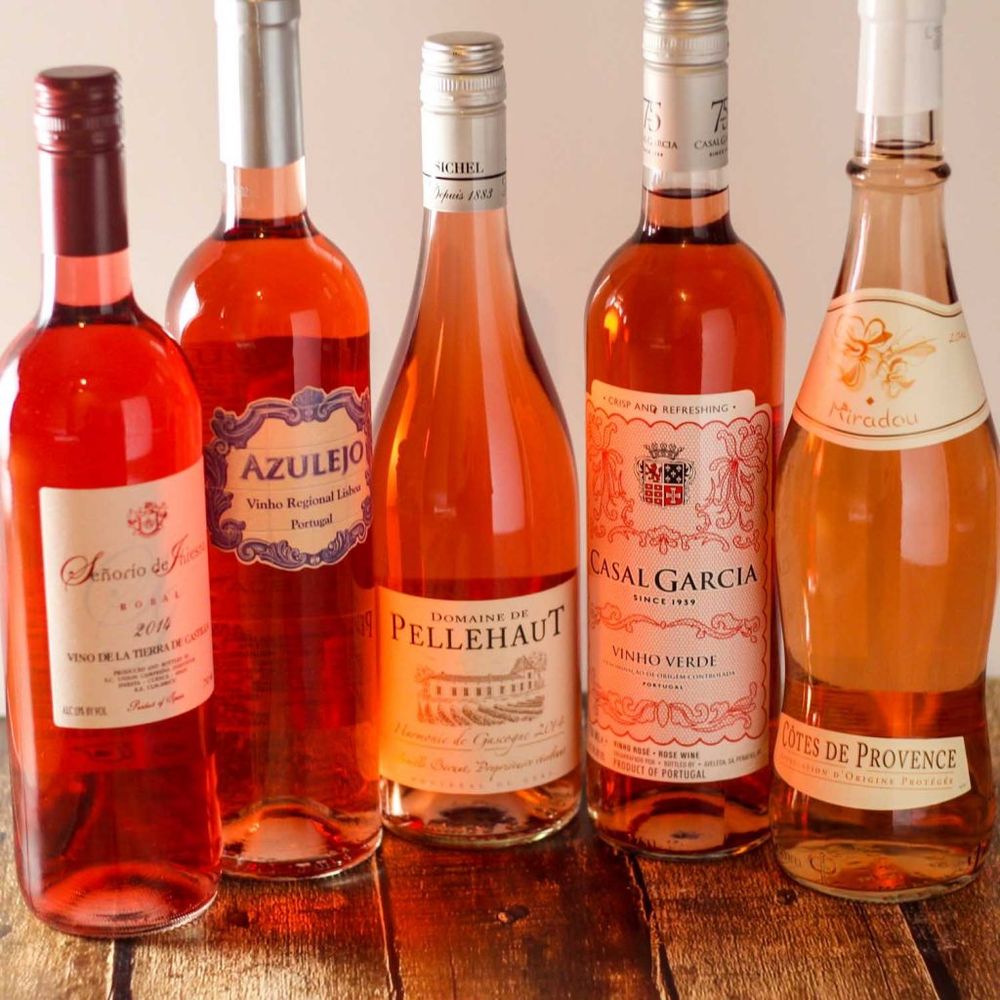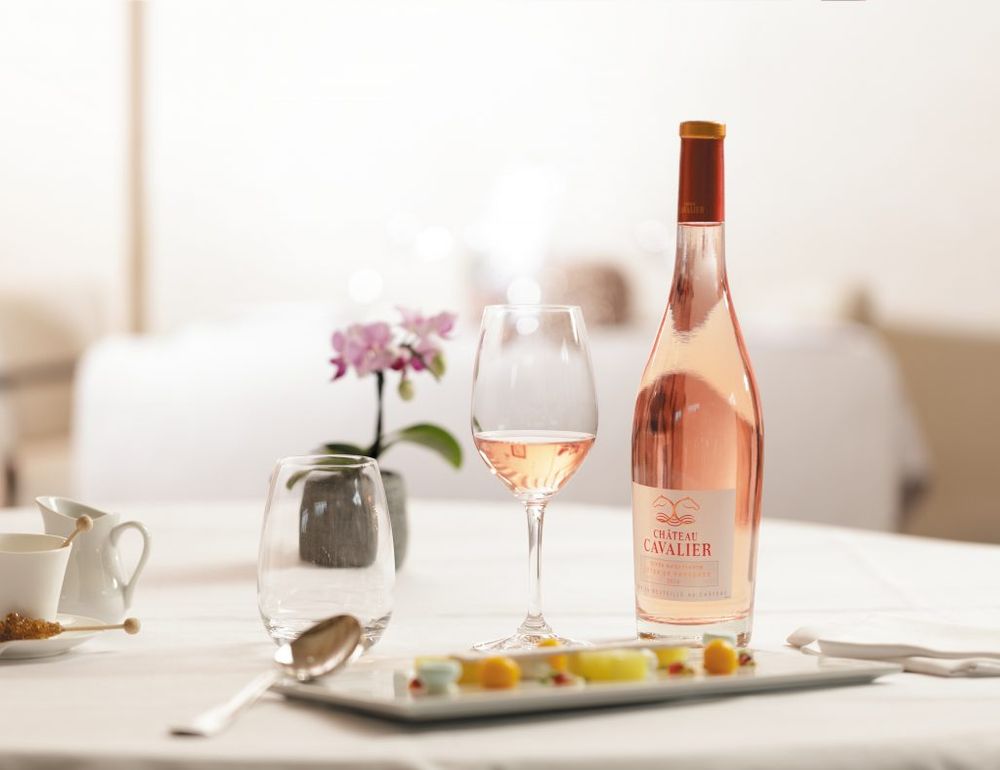Rosé wines have been the stand-out category of the summer, driving sales right across the on-trade. But have you made the most of the opportunity? Anne Krebiehl MW sets out her strategy for maximising rosé wine sales.
It is the right time of year to re-think your rosé strategy
They shimmer at al fresco tables across the country: shades of rosé from the palest tinge to lurid pink and every nuance in between. Rosés are an opportunity: for refreshment, for food-pairing and for revenue. So why is rosé the most frequent victim of wine list tokenism?
Rosé has undoubted visual appeal but that does not mean it should be taken less seriously or chosen less carefully than any other wine. People want to drink pink – the better your rosé fits your purposes, the more successful it will be. Make sure you choose well – here’s how:
Know your business and your product:
You need to know the answers to all of these questions to home into the best rosé/rosés for you: Know your or your client’s outlet: is it casual but eclectic, upmarket but traditional, ethnic but affordable, trendy but rural, classic but neighbourhood, etc.? Is there someone to explain the wine or does it have to sell itself from a list?
If you know the answers to the questions above you know who your clients are, what their spend is, how adventurous or safe your choices can be, whether price is everything or whether you can get clients to trade up: remember that giving value is the most important thing at any price point.
Once you know your business make sure you know the product, too: many – even in the trade– still say their eyes glaze over the moment anyone mentions winegrowing or –making – but this is your product and you need to understand it, just as you need to understand your business. Being in possession of the relevant facts enables you to understand in which situation the wine will work – and no, this does not include geeky stuff about rootstock, geology or pruning. For pink you need to know that:
There are two kinds of rosé:
- Directly pressed wines
- Macerated wines
Rosé gets its colour from the grape skins, just like red wine. It is the time of contact with the skins that determines how deep the colour is. How long that takes depends on the grape variety. However, it is not only colour that comes from the grape skins, but also some tannins and more importantly, flavour precursors. For directly pressed wines the only skin contact is the time they have in the short hours it takes to complete a press cycle in a pneumatic press.
Macerated wines have more time: depending on grape variety and quality, they have a few hours or overnight. Both methods can make great wines – the difference is one of style not quality.

The paler the better?
The logical conclusion would be to assume that the palest wines have the shortest maceration – however, many rather pale wines have been macerated to ensure there is enough flavour and some tannic structure and fined later to get rid of excess colour so that the rosé is elegantly pale, has the right kind of Provençal look but enough fruit flavour not to be boring. Not easy but something that can be done successfully.
Unsurprisingly, AOC Provence allows both direct pressing and maceration. Directly pressed wine will almost work like a slightly more full-bodied white: if you do a roaring trade in sashimi or seafood platters, this might well be the choice for you. It also works well as a wine just to be sipped without food.
Direct pressing also is a good idea for wineries with red grapes that are barely ripe. Here, direct pressing avoids any green flavours from unripe skins. Another reason for direct pressing might be red grapes from young vines that do not yet have enough concentration to make serious reds. This is often the case with Pinot Noir and can result in very fruity, fresh, fun wines at great value.
There also are different kinds of macerated wines: some are made from grapes that are purposely grown for rosé, macerated to extract colour, flavour and some tannin, pressed and fermented. Some appellations, like DO Navarra, known for its lusciously fruity rosados, prescribe this. If left unfined, they come in beautiful, beguiling shades of pink.
Other macerated rosés are the drawn-off juice from red-wine ferments, known as ‘saignée’ they are bled off to concentrate the resulting red wine. But don’t frown on them: if this is a rosé drawn from an exquisite red ferment, of fully ripe, low-yielding but flavoursome grapes, you are in for a treat. Its antithesis would be a bled-off wine from a hot ferment of over-cropped, overripe red grapes.
An awful lot of such contingency product rosé sloshes about – so choose carefully. In any case, macerated wines tend to be the ones with more flavour and body, they cover the entire spectrum from slender to full and can be chosen with different foods in mind: they work in place of fuller whites and lighter reds.
How to choose:

The most important bit: now you know what you need, choose with care. Here are some useful markers that should be a given at ANY price point:
Colour: While the intensity of the colour is no clue to quality, the hue of pink gives you clues about age and freshness. Whether pale or lurid, the colour should still be in the purple not orange spectrum of pink.
Aroma: You are looking for appetising aroma: the wine should smell and taste fresh even at room temperature – this is a great stress test for both whites and rosés.
Balance: The palate should have crisp acidity and the slightest hint of tannin. There should at least be some length. As long as the wine has sufficient acidity a smidgeon of residual sugar, as little as 3-4g/l, can act as an enhancer of fruit flavours. Even slightly sweeter rosés work well; sufficient acidity is the deciding factor here.
Age: Unless you are dealing with really top-notch rosé that can take a bit of age you should stick to the most recent vintage and avoid any special cut-price deals when someone’s trying to dump last year’s overstock. Stick to these rules and you’ll be able to sniff out great pink wines from across the globe.
One or more?
Offer choice: it allows people to trade up – but you have to give them a good reason to.
By the glass: Of course! That’s a no-brainer!
What else to consider?
Grape variety: Grenache with its full-fruited berry and cherry notes and its thin skins is the most popular staple for rosé wines: it shines with fruit and easy flavour and gets, depending on country, more backbone and spice from Cinsault, Syrah, Mourvèdre or Tempranillo.
Sometimes white grapes are added to the press for extra freshness and acidity: Vermentino, also known as Rolle, often comes into its own here. These wines are fruity, easy to like and lovely to look at – they need little hand-selling. If you have a Carmenère rosé you might get the tell-tale leafiness of this variety, if you get Cabernet Sauvignon rosé, you might get some more backbone…
Appellations: There is Chinon Rosé or Sancerre Rosé so if there is someone to hand-sell, this can be a useful hook: it has the comfort of a familiar name: same but different.
Popularity: There is Pinot Grigio rosé – make use of its popularity and familiarity. Some of it is Pinot Grigio that has been macerated on its pink skins for hours to have a lovely coppery colour, Italians refer to this as Pinot Grigio ramato, even though ambitious winemakers can do this across the world. Other PG rosés have some red grapes in the blend (European rules state that a varietally labelled wine can have up to 15% of other grapes– but note that the mixing of red and white wine to make a rose is only permitted in Champagne and totally verboten for any other European wine.)
Theme: You don’t have to have a Provençal rosé if you predominantly serve non-French food: think Chiaretto – Italy’s pink answer from the Veneto, think Navarra for tapas, think Malbec rosé for prawn starters in an Argentine steak house. Think Istrian rosé for curious hipsters. Think barely off-dry Pinot Noir for Asian spice. Consider recognisability if you cater to well-heeled label hunters: like distinctly shaped Domaines Ott or fancy Château d’Esclans. Keep within your theme, whatever it is. Both classic and unusual choices abound.
Last but not least: communicate this in simple, convincing terms. Even the most casual, temporary staff should be armed with two or three snappy, appetizing attributes for every wine on the list and have tasted it.
This feature was written in the summer of 2016 and has been re-posted every summer since.









































